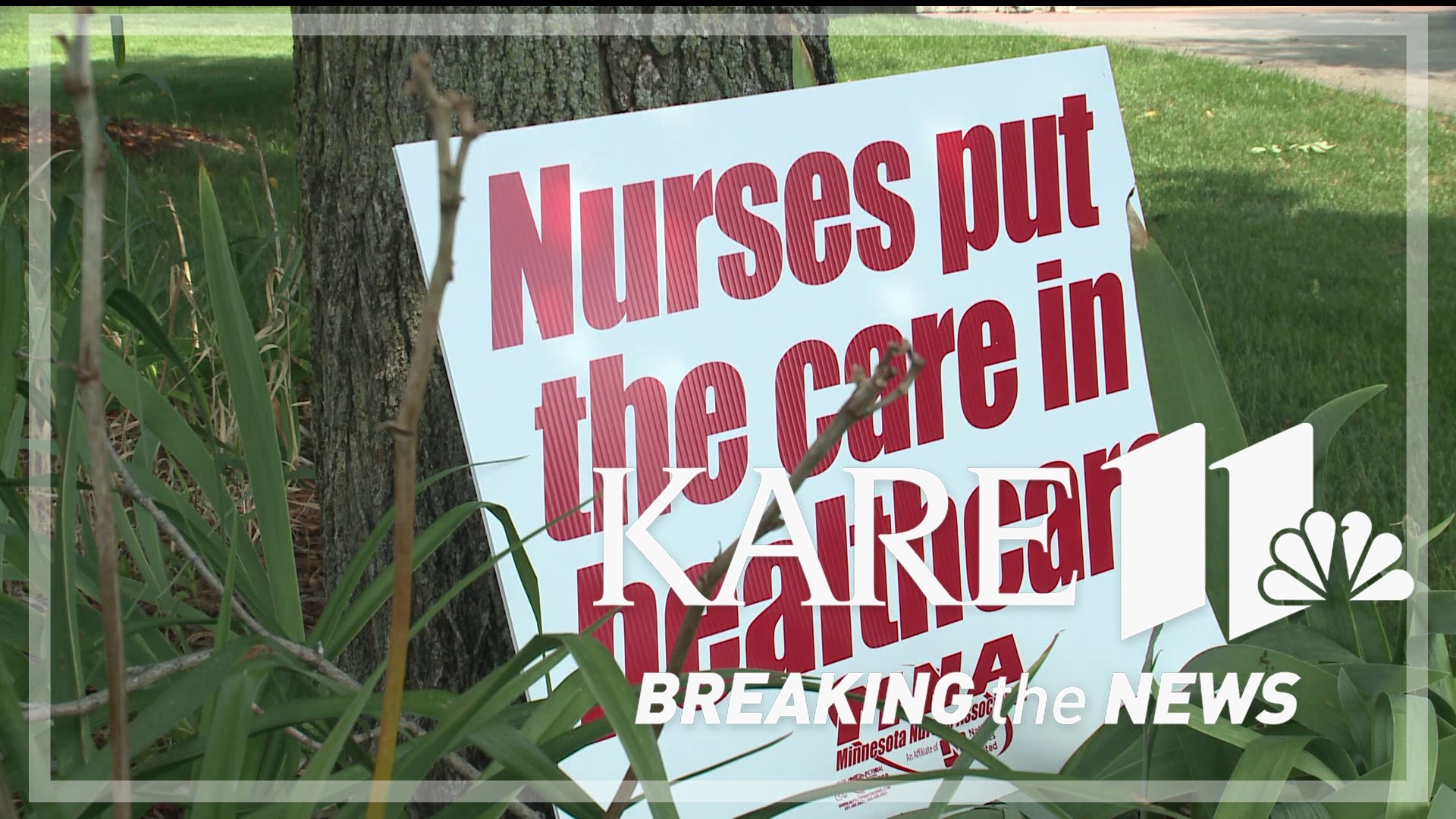MINNEAPOLIS — When 15,000 nurses strike as one at 15 different hospitals, despite slightly different contract negotiations, it makes Minnesota's nursing strike historic, complicated and surprising.
"It surprised me that it's gotten this far," said Alan Benson, a professor of work and organizations for the University of Minnesota Carlson School of Management.
Benson is surprised because of how much he says both sides are risking, from the nurses who will go without pay to the hospital systems working to replace them without jeopardizing patient care.
"It could cost potentially twice as much to replace nurses, to replace them for people who might not have as much familiarity with the hospitals protocols and procedures," Benson said.
KARE 11's Kent Erdahl: "What does it tell you that we did get to this point and we still have two sides that are very far apart in terms of, at least wages?"
Benson: "I think it's really a sign of how tight the labor market is for registered nurses at this point. Even before the pandemic, the nursing unemployment rate, nationally, was around 1%."
Since the pandemic, shortages have expanded across the healthcare industry, with an estimated 37,000 fewer healthcare workers on the job since February 2020, according to the Bureau of Labor Statistics.
While the shortage gives nurses more collective power to strike, it's also pushed them to the brink.
"When there are staffing shortages it makes it very hard for the workers who are remaining to carry on," said Janette Dill, a sociology professor at the University of Minnesota who specializes who focuses on the healthcare workforce. "High turnover contributes to more turnover."
Dill says the movement to strike in response to that turnover and added strain, marks yet another example of big national shift in union activity across industries.
"The most activity, really, is in these female dominated occupations, like nursing, like teaching," Dill said. "Occupations where working conditions have really deteriorated, but also where workers are really wanting to advocate for the people that they are caring for."
But responding to that staffing crisis has also led to a sort of paradox for hospital systems, according to David Larson a professor of labor law at Mitchell Hamline School of Law.
"The number of people who have left the profession is unprecedented, so if you've got to get people back in, and you've also got to try to give everybody who is already in - a raise - that's going to be very difficult to manage financially," Larson said.
It's why he says all hospital systems and nurses, nationwide, are watching what happens next.
"Nurses around the country are going to see what's happening in Minnesota and they're going to ask the question, 'Do we need to do the same thing?'" Larson asked. "If the nurses actually get concessions, then I think you can pretty much anticipate it's going to happen again."
Whatever happens, he hopes it's resolved quickly.
"It's only a three day strike, but three days when it comes to healthcare is a long time and a lot can happen," Larson said. "They don't want to see the patients suffer, I really believe that, but when you have this many nurses are going on strike, patients are going to suffer that's just inevitable, so I think one of the interesting things is how are the parties going to reconcile their interests of trying to make their conditions better as soon as possible, but at the same time, not disadvantaging - or even harming - their patients."
Watch more local news:
Watch the latest local news from the Twin Cities in our YouTube playlist:

